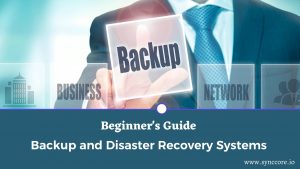Devices and applications that are connected to the internet They’re invading every aspect of our life, whether it’s our homes, offices, cars, or bodies. All items are becoming more sensible in order to make use of the benefits of being linked to the internet. This Internet (IoT) is exploding at a breakneck speed.
By 2020, wireless networks will be connected to over forty billion devices. Into and out of these devices, a massive amount of data is sent across the network. While enterprise IT systems are hosted in the cloud, a large amount of IoT infrastructure is hosted locally. The number of devices & workload at the sting is orders of magnitude higher than what we’d see in the data centers, and they’re scattered in nature.
While the danger surface used to be limited to only enterprise IT setups, it has now grown significantly larger in recent years. Before we discuss IoT security, let’s take a look at some of the threats that it faces.
Table of Contents
Common Threats for IoT
Danger could be a path or an indication that a cybercriminal would gain access to your core systems that are connected to the internet. With so many devices connected to the Internet of Things, the most common hazard is:
No physical boundaries
IoT systems live outside of the traditional network boundary, in the open. The old security precautions for limiting device access are no longer valid. These devices are frequently moved to new locations and maybe structured to access the network once they are necessary.
Weakly organized Wi-Fi and Bluetooth
Configurations of Wi-Fi and Bluetooth in IoT provide a considerable risk of data leakage. Weak encryption schemes will allow hackers to steal credentials while data is being transmitted across the network. Also, most of the time, the passwords for each device do not appear to be unambiguously established. Only if one device is hacked, it is a loophole for unauthorized access to the network.
Physical possession of the device
Wherever attackers obtain physical access to equipment and workloads, this could be the most dangerous of all the risks. With this accessibility, attackers will have access to the devices’ internals and content, as well as all network connections. The hackers will steal scientific secrets, modify their code, and substitute it with another device under their control if they gain physical possession of an IoT device.
IoT vs. IT
Although IoT devices are on the edge, IT infrastructure is hosted in the cloud. Any IoT mentioned threats could lead to hackers gaining entry to the main IT network if IoT security is compromised. A few real-life examples are presented below.
HVAC data breach on a specific target
Subway Point-of-Sale (PoS) Hacking
SamSam Ransomware is a type of ransomware that encrypts
IoT rules
Despite the presence of IoT regulations in various locations, they are insufficient to limit the risks of assaults. After restricting attacks, CA incorporates a “reasonable security level” of restrictions. Similarly, this same United Kingdom has enacted laws requiring particular passwords; businesses must provide a clear vulnerability disclosure contact and frequent security updates to IoT connected systems to a state IT infrastructure. Several security critics, on the other hand, praised these standards of surveillance.
Attackers have progressed at a much faster rate in their approaches, whereas these regulations were only enforced once a year or twice a year at most. It’s difficult to keep up with the threat of attackers just by relying on restrictive regulations.
What should Businesses Do?
Businesses must rethink their security practices for IoT devices while the higher-than-rules are in place.
To begin, they must first identify IoT devices. Those gadgets should have unique identities that can be easily controlled. This is vital because it serves as the inspiration for a slew of safety measures that will be implemented later.
The package must then be protected by means such as a device, application compliance, or personnel compliance. These safeguards should be implemented at the very top of the identification layer. Finally, companies should have the strongest level of compliance, which determines which version of the package should be installed and how much software must be installed on the devices.
To summarise, identity management should be at the center of all security solutions for IoT devices, followed by software and package administration. Finally, any kind of quiet compliance must be engineered on top of it.
Synccore is the most affordable cloud service provider company. Synccore offers 300% lower costs as compared to other service providers like AWS, Azure, and Google cloud.
If you’re interested in our cloud service! contact us right now at +1 833 612 0999 or send a mail at [email protected] To know more please visit our website www.synccore.io
Read More: Cloud Servers or Physical Servers: Which Is Better?



